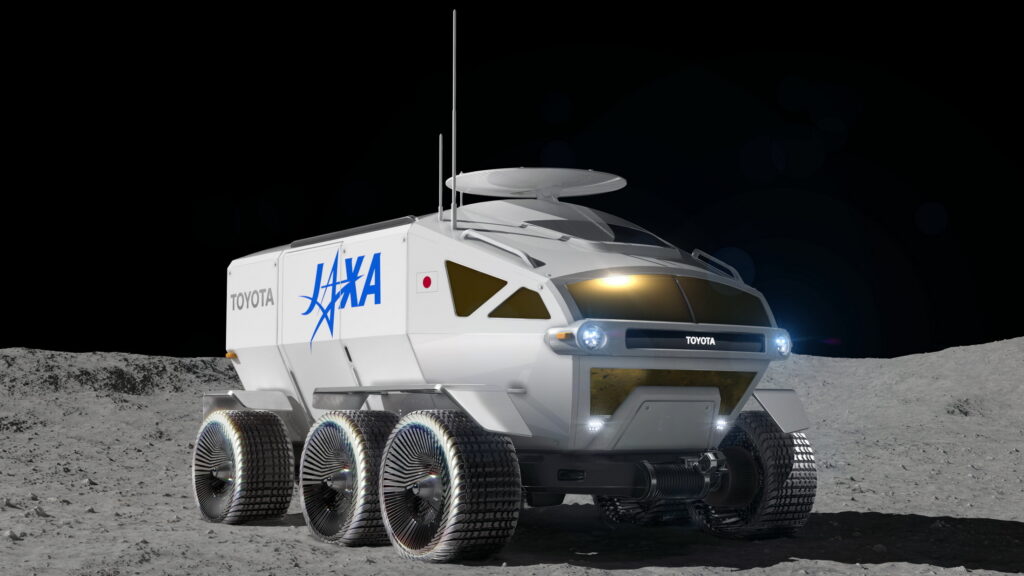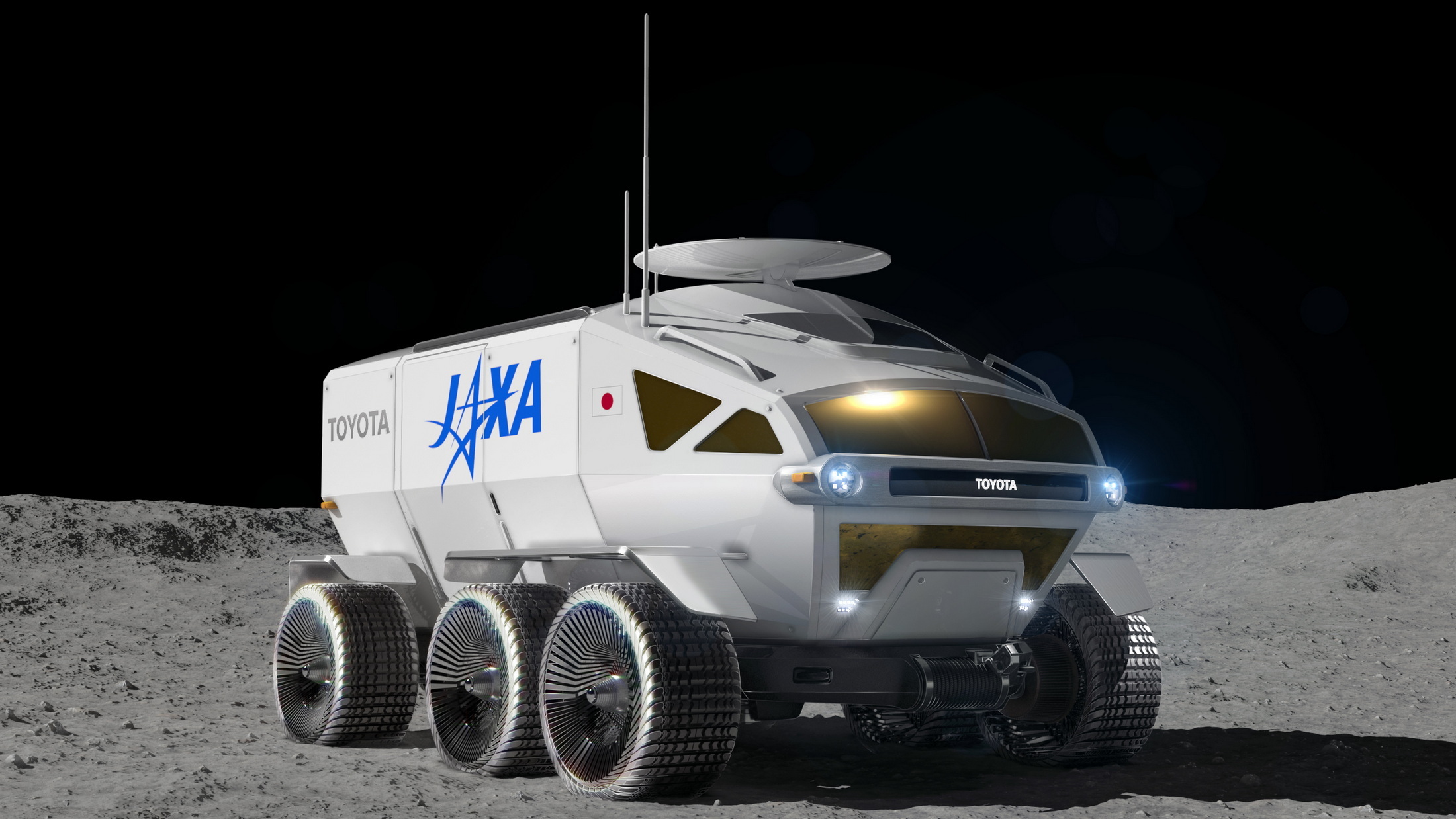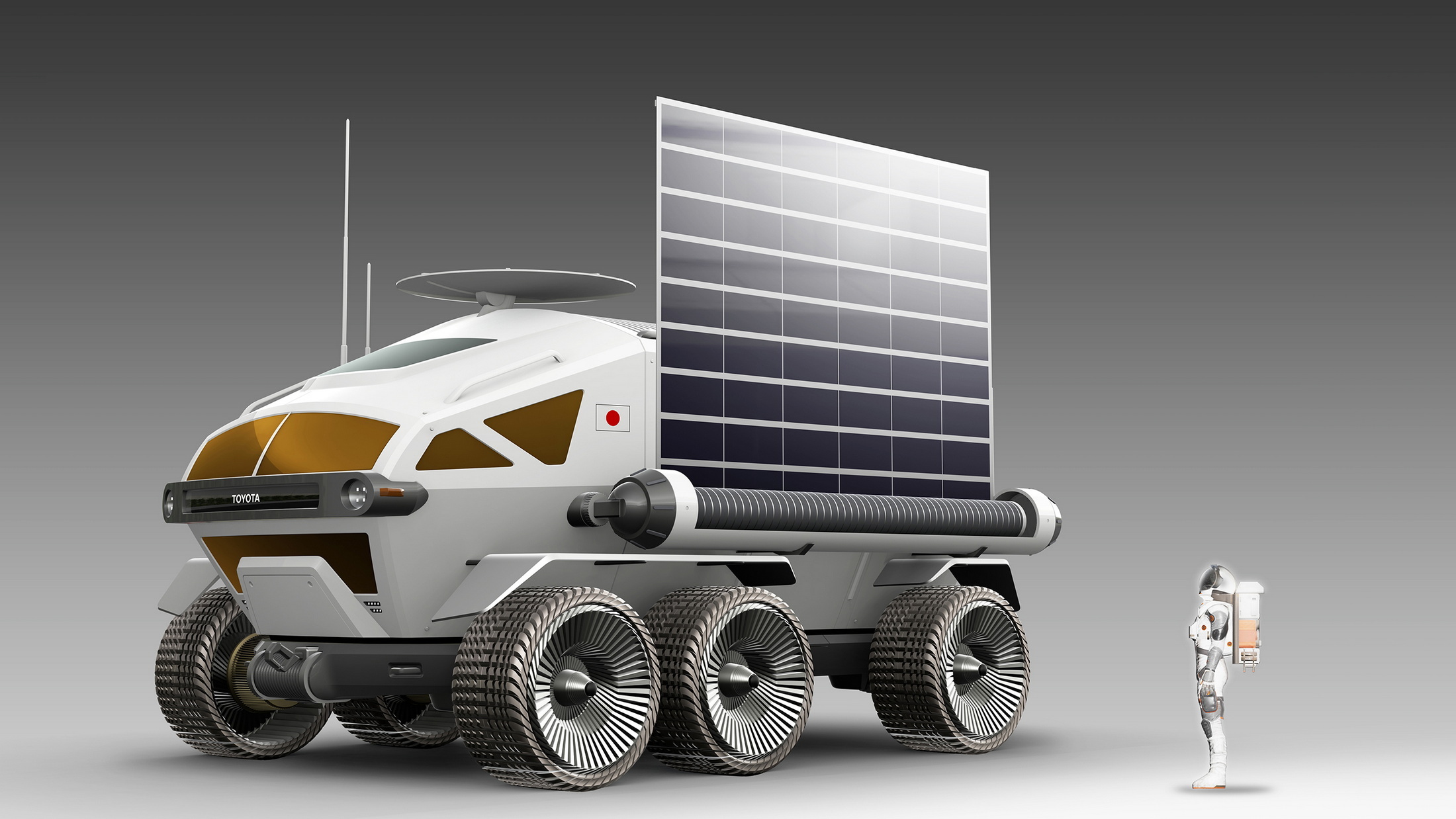Toyota’s expertise in the realm of hydrogen fuel cell technology could give it an advantage in space exploration. The use of water as a source of hydrogen could allow its Lunar Cruiser to embark on longer missions by using resources that are already there.
As part of Japan’s ambitions to step up its presence in space, it is participating in NASA’s Artemis program. It eventually hopes to have its own lunar space station called Gateway in operation in the latter half of the decade.
As part of that ambition, Toyota has been working with the Japanese space agency since 2019 on the development of the Lunar Cruiser. Reuters reports that it will use hydrogen technology to allow it to drive more freely, and even possibly indefinitely, on the moon.
Read: GM’s NASA Lunar Rover Built With Lockheed Martin Could Use Ultium Batteries

The project relies on Toyota’s experience in hydrogen mobility to develop a regenerative hydrogen fuel-cell vehicle for the moon. It will use solar panels to electrolyze water during the day. Then, it will use the hydrogen produced by that reaction to power the Lunar Cruiser’s electric motors during the 14-day-long lunar night.
Not only will the technology help the vehicle work longer shifts, it could help it have a longer service life, too. Toyota doesn’t yet know how to turn the ice that’s already on the moon into hydrogen to power the Lunar Cruiser, but thinks the technology could someday be developed with the help of other companies.
“In order to conduct long-term and stable research on the surface of the moon, we are aiming to source various items on site over a long period,” said Ken Yamashita, head of lunar exploration projects at Toyota, who added that, in the short term, water will likely have to be sent up for each mission.
NASA expects the Japanese space agency to provide its own lunar rover by 2029, as part of its contribution to the Artemis program. Toyota anticipates that it will get a firm order for its Lunar Cruiser by next fall, and that once it is in service, it will be able to carry two astronauts for 42 days a year, and that it will be in use for at least 10 years.
“Our idea is to continue with the lunar rover longer than those 10 years if there’s a company or arrangement that can supply the water needed for that,” said Yamashita.











